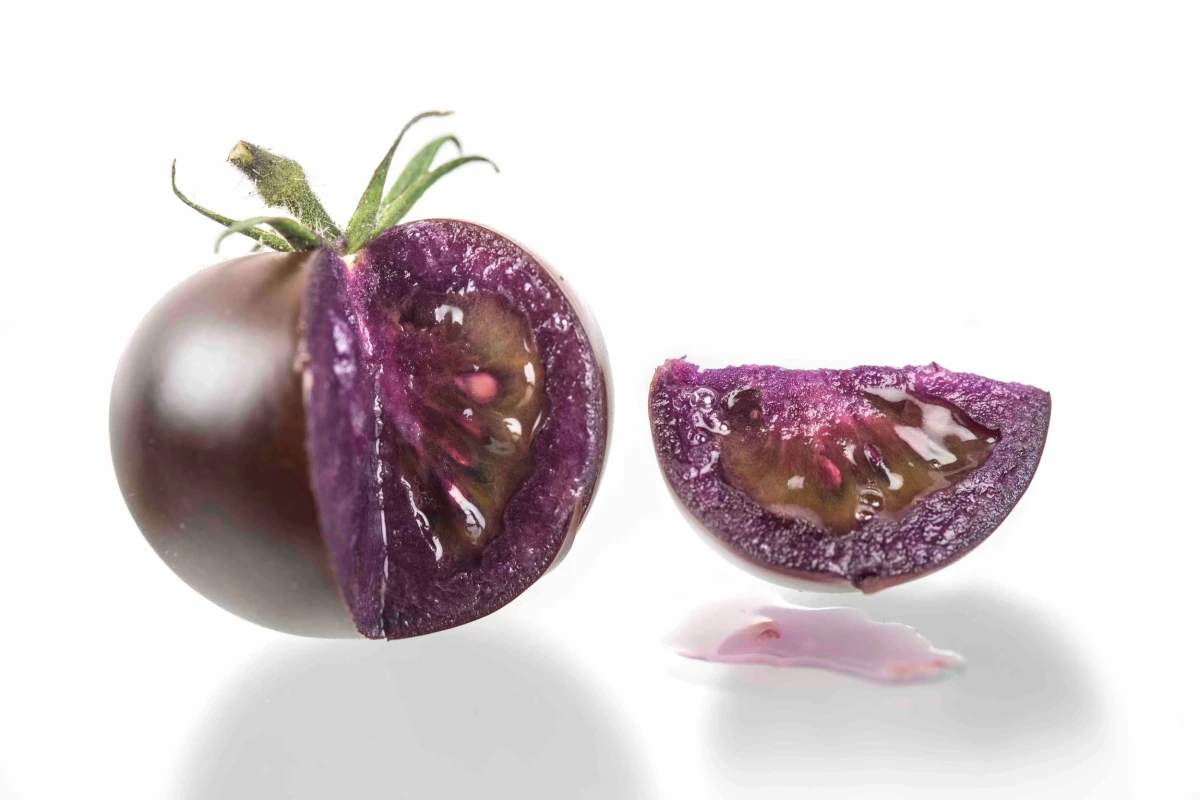After more than a decade of development a nutritionally enhanced purple tomato has been deemed safe to grow by the United States Department of Agriculture (USDA). The tomatoes have been gene edited to produce 10 times more antioxidants than pre-existing varieties.
Back in 2008 a fascinating study was published in the journal Nature Biotechnology. The research reported on a type of tomato that had been gene edited to produce high volumes of antioxidants called anthocyanins.
Anthocyanins are naturally found in plenty of foods, such as blueberries and red cabbage. They are responsible for the purple pigment in those foods and have been linked to a variety of health benefits, including reduced risk of heart disease and diabetes.
Some types of tomato with naturally purple skins do contain low levels of anthocyanins but some food scientists wondered if those levels could be increased with a few genetic tweaks. Two genes were taken from another plant (the snapdragon) and added to a type of purple tomato. The genes amplified the plant's ability to produce anthocyanins, resulting in a unique tomato with richly purple-colored flesh.
The 2008 study reported testing the health effects of this anthocyanin-boosted tomato on mice engineered to develop cancer. The mice fed a diet supplemented with the purple tomatoes were found to live 30% longer than mice fed a regular diet.
"This is one of the first examples of metabolic engineering that offers the potential to promote health through diet by reducing the impact of chronic disease," said plant biologist Cathie Martin in 2008. "And certainly the first example of a GMO [genetically modified organism] with a trait that really offers a potential benefit for all consumers.”
After a long time spent navigating regulatory processes, the genetically modified purple tomato is now one step closer to the market following a tick of approval by the USDA’s Animal and Plant Health Inspection Service (APHIS). This authorization means the genetically modified plant is no longer regulated with strict controls limiting where and how it can be grown. It can be safely grown anywhere in the United States like any other allowable crop.
“When Cathie and I founded NPS [Norwich Plant Sciences] nearly 15 years ago to bring to market health-promoting, genetically enhanced purple tomatoes, invented in the UK, we never thought it would take so long to obtain regulatory approval,” said Jonathan Jones, who has been working with Martin on commercializing the plant for more than a decade. “This is a red-letter day for crop improvement, with approval of a beneficial product by USDA, after careful scrutiny of a detailed information dossier that describes its properties.”
Over the last few years a number of uses for the enhanced tomato have been explored. The scientists initially have been focusing on producing an anthocyanin-rich tomato juice that could be tested in clinical contexts for patients with cancer or cardiovascular disease.
However, that kind of product still faces plenty more testing and regulatory hurdles before reaching the market. So the first step for Martin and Jones will be selling the seeds for these purple tomatoes to home growers.
The US approval marks the first place in the world to allow the genetically modified product to be grown. Martin and Jones hope the tomatoes will be approved in the United Kingdom soon.
“We are now one step closer to my dream of sharing healthy purple tomatoes with the many people excited to eat them,” Martin said. “The bittersweet thing is that the tomatoes will be on sale in America and not the UK as well. But the plus side is that by focusing on home growers we will be consumer oriented, and we will be able to get feedback and interest needed to develop other products.”
Sources: USDA, John Innes Centre




